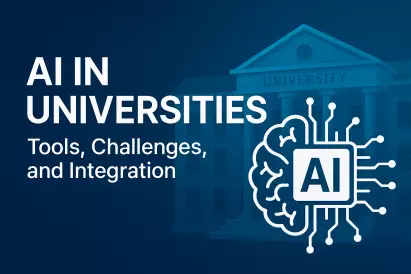Master’s degrees in the United States are becoming an essential component of the nation’s educational and economic framework. With graduate school enrollment rising more than 45% since the early 2000s—surpassing the 30% growth seen among undergraduates—and the doubling of student loan volumes, the drive toward postgraduate studies is stronger than ever.
This trend is primarily fueled by the need for advanced skills, higher earnings potential, and access to specialized careers.
Emerging Fields Driving Demand for Graduate Education
As of 2025, there is a noticeable shift in the fields where master’s degrees are most in demand. Health professions and behavioral sciences are especially prominent.
Nurse practitioners, therapists, and mental health counselors are seeing significant growth due to evolving societal and policy priorities related to well-being and healthcare access.
These expansions underscore the importance of targeted graduate education programs.
Sectors such as health management and public health offer high returns for graduates, particularly in median salaries exceeding $90,000 annually.
Rise of Interdisciplinary and Tailored Graduate Programs
Modern workforce demands are increasingly complex, prompting master’s programs to adopt interdisciplinary formats. Combinations like social work with data analytics, or health care administration with business intelligence, are more common.
These hybrid formats prepare students for cross-functional roles across industries.
Flexibility is another major trend, with custom pathways allowing learners to align educational outcomes with personal career trajectories.
Disciplines such as project management and entrepreneurship benefit significantly from this model, producing graduates ready to tackle widespread challenges.
Remote Learning Becomes the Norm: Online and Hybrid Formats
Graduate learning in 2025 is defined by increased access through online and hybrid formats. These delivery modes are crucial for adult learners managing careers and families, offering asynchronous coursework, virtual simulations, and real-time collaborations.
Institutions now invest in robust digital infrastructure to ensure parity with on-campus programs.
Fields adapting quickly to remote instruction include data analytics and information systems management, which attract professionals seeking flexible upskilling options without sacrificing educational quality.
International Reach and Cross-Border Recognition of Credentials
With master’s degrees from U.S. institutions gaining wider recognition globally, students benefit from access to competitive roles worldwide.
This is especially valuable in fields like education, consulting, and healthcare. Graduate programs are now embedding global competencies and culturally responsive teaching into their curricula to align with the international job market.
Participation from international candidates continues to grow in programs focused on sectors like international management and global marketing, while regionalization efforts support career mobility across continents.
Affordability, Tuition Pressures, and Financial Aid Dynamics
Rising tuition costs remain a concern, particularly as federal graduate loans have doubled since 2000.
Institutions and policymakers are now re-evaluating funding mechanisms to avoid excessive borrowing.
While student debt increases, scholarship programs, especially those promoting diversity, are expanding efforts to provide financial relief.
Programs addressing socio-economic equity—such as those in social responsibility or public administration—often offer targeted scholarships to underrepresented communities, enabling broader access to transformative education.
Changing Student Demographics and Higher Career Expectations
The student body pursuing master's degrees continues to evolve. Women now earn these credentials at higher rates than men, and institutions are witnessing increased diversity in race, age, and career stage.
Today’s students want programs with immediate real-world impact—curricula that enhance employability, leadership skills, and income potential.
This demand is visible in enrollment for applied degrees in MBA programs, executive education, and sector-specific areas such as hospitality and event management.
Addressing Pain Points: Challenges of Master’s Programs Today
- Affordability: With tuition continuously rising, students question the return on investment in low-paying sectors.
- Program Relevance: Curricula must evolve rapidly to match shifting industry expectations, especially in dynamic areas like AI, cybersecurity, and health tech.
- Maintaining Quality: Ensuring consistent outcomes across both online and in-person modalities remains a challenge for accreditation bodies.
- Updating Skills: Fast-evolving work environments require lifelong learning models to close emerging skill gaps.
- Regulatory Oversight: Programs operated globally or online must navigate complex accreditation and recognition issues across borders.
Opportunities Shaping the Future of Graduate Education
Despite challenges, the master's degree space is also full of opportunity.
Innovation in pedagogy—such as micro-credentials and virtual labs—is enabling just-in-time learning. Industry partnerships are fostering curricula aligned with job market trends and real-world demands.
Technology is helping institutions personalize learning and improve outcomes.
Additionally, social and environmental priorities have prompted growth in niche degrees like sustainable development and green finance, preparing students for leadership in socially responsible organizations.
Overall Impact: Students, Employers, and the Economy
By 2025, the promise of a master’s degree is tangible: a 14% average earning increase, improved employability, and sectoral flexibility, especially in thriving fields like healthcare technology.
For businesses, these degrees provide a hiring pool with deeper expertise and cross-sector agility.
Economically, greater master's attainment bolsters innovation and global competitiveness within a knowledge-based economy.
The long-term success of graduate education lies in its ability to strike a balance between academic rigor and pragmatic flexibility.
As programs become more inclusive, digital, and connected to industry needs, they offer a promising route for economies and individuals looking to thrive in the future of work.



